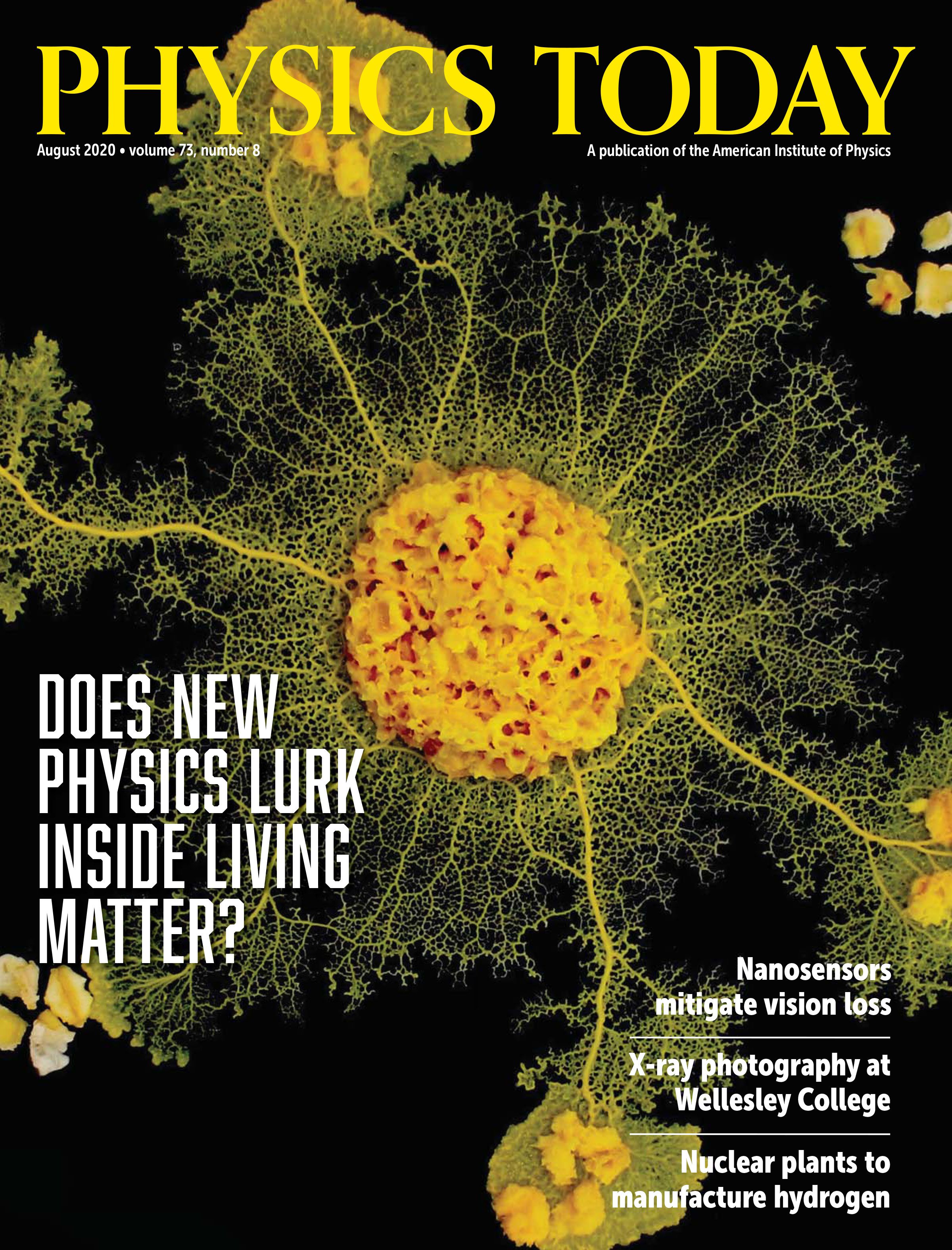August 2020 Issue of Physics Today Now Available

Hua Liu American Astronomical Society (AAS)
Physics Today, the flagship publication of the American Institute of Physics (AIP), is the most influential and closely followed physics magazine in the world. With authoritative features, full news coverage and analysis, and fresh perspectives on technological advances and groundbreaking research, Physics Today informs readers about science and its role in society. Members of the AAS, an AIP Member Society, automatically receive free print and online subscriptions to the magazine. Physics Today Online, the magazine’s internet home, presents an enhanced digital edition and provides a valuable online archive.
 In the August 2020 Issue
In the August 2020 Issue
Sarah Frances Whiting and the “Photography of the Invisible”
A team of women working in the physics laboratory at Wellesley College carried out some of the first successful x-ray experiments in the US. — John S. Cameron & Jacqueline Marie Musacchio
Does New Physics Lurk inside Living Matter?
The link between information and physics has been implicit since James Clerk Maxwell introduced his famous demon. Information is now emerging as a key concept to bridge physics and biology. — Paul Davies
Photoelectron Spectra Explain How Ammonia Solutions Become Metallic
The gradual emergence of delocalized electron states in lithium–ammonia solutions underlies their transition. — Christine Middleton
Near-IR Nanosensors Help Blind Mice See
When blindness sets in gradually, the patient’s remaining vision can hinder prospective treatments. In a new experimental strategy, researchers turn to a different wavelength. — Johanna L. Miller
New 5G Exemption May Jam GPS Devices
Opposition in the public and private sectors is growing against a US telecommunications plan that would allow one company to use its satellite communications radio spectrum for terrestrial applications. — Alex Lopatka
Could Hydrogen Bail Out Nuclear Power?
As nuclear-powered water electrolysis becomes cheaper, it could compete with the current, carbon-intensive hydrogen production process. — David Kramer

